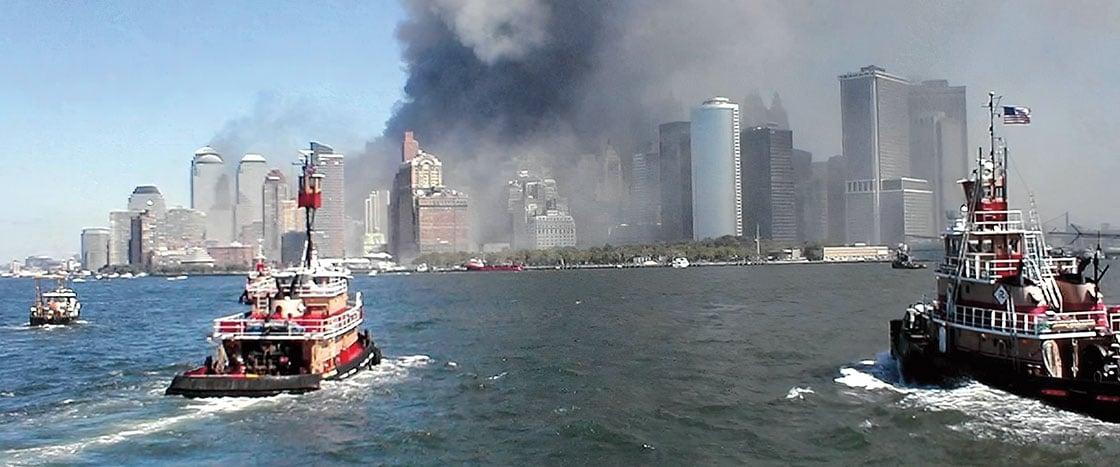Courtesy Thomas Panevino
Thomas Panevino with his dog, Eddie, in 2001
Eleven-year-old Thomas Panevino couldn’t believe his eyes. He stared in shock at the New York City skyline. Only a few hours earlier, the city’s two tallest buildings—the Twin Towers—had stretched toward the sky. In their place now was a huge dark cloud, like a monster looming over the city.
It was September 11, 2001. Two planes had crashed into the towers on purpose, causing them to collapse. Thomas and his dad were on a small police boat heading across the Hudson River toward New Jersey. All around them, dozens of other boats were carrying frightened people away from the scene of the attacks.
Thomas clutched a carrier holding Eddie, the family’s miniature poodle. Suddenly, he heard someone cry out, “The boat is sinking!” Thomas looked at the back of the boat. Sure enough, water was pouring in.
They were only about halfway across the river. Thomas fixed his eyes
on the New Jersey dock ahead. Would they be able to make it?
Eleven-year-old Thomas Panevino stared up in shock. He looked at New York City’s skyline. Only a few hours earlier, New York City’s two tallest buildings had been there. They were called the Twin Towers, and they stretched toward the sky. In their place now was a huge dark cloud, like a monster hanging over the city.
It was September 11, 2001. Two planes had crashed into the towers on purpose. This caused them to crumble. Thomas and his dad were on a small police boat. They were heading across the river toward New Jersey. All around them were dozens of other boats. Each one was carrying scared people away from the scene of the attacks.
Thomas gripped a carrier holding Eddie, the family’s small black dog. Suddenly, he heard someone cry out, “The boat is sinking!” Thomas looked at the back of the boat. Water was pouring in.
They were only about halfway across the river. Would they be able to make it to the New Jersey dock?

